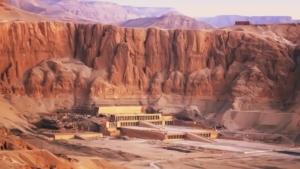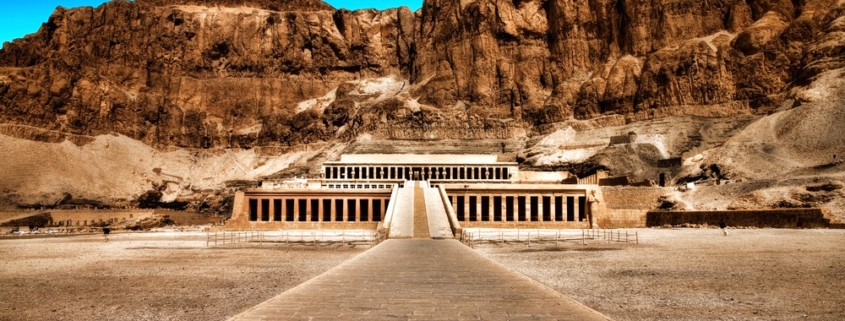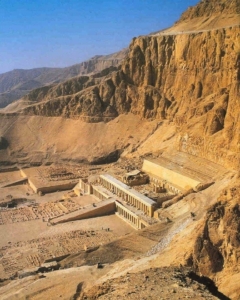Hatshepsut temple
Temple of Hatshepsut
is a stunning mortuary temple complex in Luxor. Built in the 15th century BC for queen Hatshepsut, one of the few female pharaohs of ancient Egypt and it’s considered a masterpiece of ancient architecture.
The temple rises from the desert floor in three tiers, blending seamlessly with the towering cliffs of Deir el-Bahari. Each level is adorned with intricate carvings and colorful reliefs depicting Hatshepsut‘s life, achievements, and religious beliefs.

Some key features of the Hatshepsut Temple:
Three terraces: The terraces progressively ascend the cliffs, creating a dramatic sense of scale and grandeur.
Punts: On the lowest terrace, a series of ramps lead to a landing where ceremonial boats, known as “punts,” would have arrived.
Mortuary temple: The middle terrace houses the main temple, dedicated to the gods Amun and Hatshepsut. Inside, you’ll find beautifully preserved reliefs showcasing Hatshepsut’s divine birth and her expedition to Punt.
Upper terrace: The top terrace, once home to colossal statues of Osiris, offers breathtaking views of the Nile Valley and the surrounding desert.
The Hatshepsut Temple is not only a testament to Hatshepsut’s power and legacy but also a remarkable example of ancient Egyptian engineering and artistic skill. It’s a must-see for anyone visiting Luxor and interested in the history and culture of ancient Egypt.
Here are also some additional facts about the Hatshepsut Temple:
Architect: The temple’s architect is believed to be Senenmut, Hatshepsut’s trusted advisor and confidant.
Materials: The temple is constructed from limestone, sandstone, and granite.
UNESCO World Heritage Site: The Hatshepsut Temple was designated a UNESCO World Heritage Site in 1979.
if you willing to visit this stunning temple check this link here for more deatails and special deals
Written by ATW Updated Jun 2024






